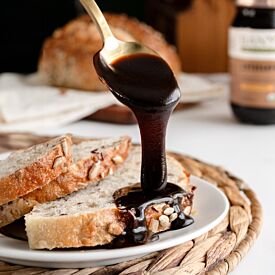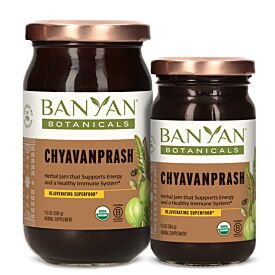Fall for Vata-Kapha and Kapha-Vata

You’ll want to focus most of your energy on balancing vata this fall. Keep in mind that your body’s natural defense against excess vata will be to increase kapha, so you’ll want to be especially vigilant about maintaining adequate moisture, staying warm, and grounding your energy.
With kapha season (late winter through early spring) right around the corner, you’ll need to do this in a way that doesn’t disturb kapha.
Foods to Favor
In general, you will probably want to eat a vata-balancing diet, being careful to honor kapha with smaller portions, lots of cooked vegetables, and a flair for elaborate spices.
Some especially balancing autumn foods include apricots, berries, cherries, peaches, soaked prunes, soaked raisins, asparagus, beets, cooked carrots, chilies, green beans, leeks, mustard greens, okra, cooked onions, rutabagas, honey, amaranth, basmati rice, seitan, miso, tur dal, cottage cheese, goat’s milk, shrimp, and sunflower seeds.
Acceptable Seasonal Indulgences
You can indulge in some heavier, oilier foods as well as some sweets, as long are you are mindful of doing so in a way that’s not detrimental to kapha. If you eat red meat, for instance, take a small portion and eat it with lots of steamed vegetables and a little grain.
In the way of sweets, choose lighter options, like a date shake or a rice khir (pudding) made with goat’s milk and honey. Or, you could make some pumpkin gingerbread with lots of warming spices to make it more digestible. Focus on savoring the richness and flavor of these foods so that you don’t overindulge on quantity.
Foods to Minimize
You’ll do well to minimize foods that aggravate both vata and kapha—foods like watermelon, wheat pasta, soybeans, and ice cream. Otherwise, your best strategy will be to notice your body’s response to different foods.
Watch for signs of lethargy, low energy after meals, and brain fog (increased kapha) or gas, bloating, constipation, and dry skin (increased vata) and adjust your diet accordingly.
Lifestyle Adjustments
This is a great time of year to develop a refined sense of self-perception and to begin to assess for yourself what it is that your system most desires. More than likely, your body will thank you if you slow your pace, create time for self-reflection, mellow your schedule, and breathe deeply. But you’ll need to find ways to continue to honor kapha’s need for a faster-paced, active lifestyle as well. A simple awareness of this dichotomy is essential.
If you find yourself heading too far in one direction, rein it in and balance with the opposite until you recover your sense of equilibrium. For example, if you engage in a vigorous yoga practice, finish up with some restorative poses and a lengthy period of restoration in Savasana.
Or, if you’re starting to feel heavy or tired, get up and go for a brisk walk. In general, if you can really listen to your innermost needs, you’ll be far less likely to be driven to either extreme of laziness or crazed overexertion.
You may also find it helpful to read both the vata and kapha fall guides for more hints on supporting these doshas during the fall.










